SEO For Restaurants: Serving Up Better Rankings
Daniel Trick
Sep 19, 2025
15 min read
Running a restaurant? Or at an agency looking to snap up some piping hot restaurant customers?
You need to invest in SEO as much as you invest in fresh ingredients.
Whether you’re managing the online presence of a multi-location chain or a single cozy bistro, restaurant SEO is the golden ticket to putting more diners in seats (and more orders in the kitchen).
The competition is fierce – there are over 1 million restaurant locations in the U.S. alone – and major platforms like Yelp, TripAdvisor, and Google Maps often dominate search results for dining.
Yet with ~90% of consumers researching a restaurant online before ever dining in, you can’t afford to be invisible on Google.
Your mouth-watering dishes might sell themselves, but that won’t matter if hungry customers can’t find you online.
If you’re an in-house marketing pro or an SEO agency niched into hospitality, this guide will help you serve up better rankings (with a side of extra conversions). We’ll cover:
- What restaurant SEO is (and how it’s unique)
- Why SEO is critical for restaurants
- How to do restaurant SEO right – from local search optimization and content “recipes” to link building strategies and digital PR
- How fatjoe services (like link building, content writing, and citation building) can give your restaurant SEO a boost
Let’s dig in!
What Is Restaurant SEO?
Restaurant SEO is the practice of optimizing a restaurant’s website (and online presence) to rank highly for food-and-location related searches.
In simple terms, it means making sure your eatery shows up when people search for dining options – whether it’s “best sushi in [City]”, “Italian restaurant near me”, or “happy hour deals [Neighborhood]”.
Just as a chef tweaks a recipe for best flavor, SEO tweaks your site for best visibility on search engines.
SEO game too strong pic.twitter.com/DkscS3R0hL
— gaut (@0xgaut) March 31, 2023
Restaurant SEO is inherently local.
You’re competing for hyper-local keywords that include city names, neighborhoods, or “near me” queries.
For example, a pizzeria in Denver isn’t trying to rank nationally for “pizza” against Pizza Hut; it’s targeting “authentic Neapolitan pizza Denver” or “pizza delivery in Cherry Creek”.
These long-tail, location-specific searches signal strong intent – the person is hungry and ready to eat, often immediately. By optimizing for these terms, you ensure your restaurant appears exactly when and where hungry customers are looking.
It’s not just about plain text results, either.
Restaurant SEO spans your Google Business Profile (for those map pack results with star ratings), your menu content, images of your dishes, online reviews, and even social media presence.
The fundamentals remain classic – keyword research, quality content, authoritative backlinks – but with a local twist.
And because food is such a visceral, visual industry, elements like photos, videos, ratings, and social media play a big role in how you rank and attract clicks.
Why Restaurant SEO Matters
Diners Search Online First
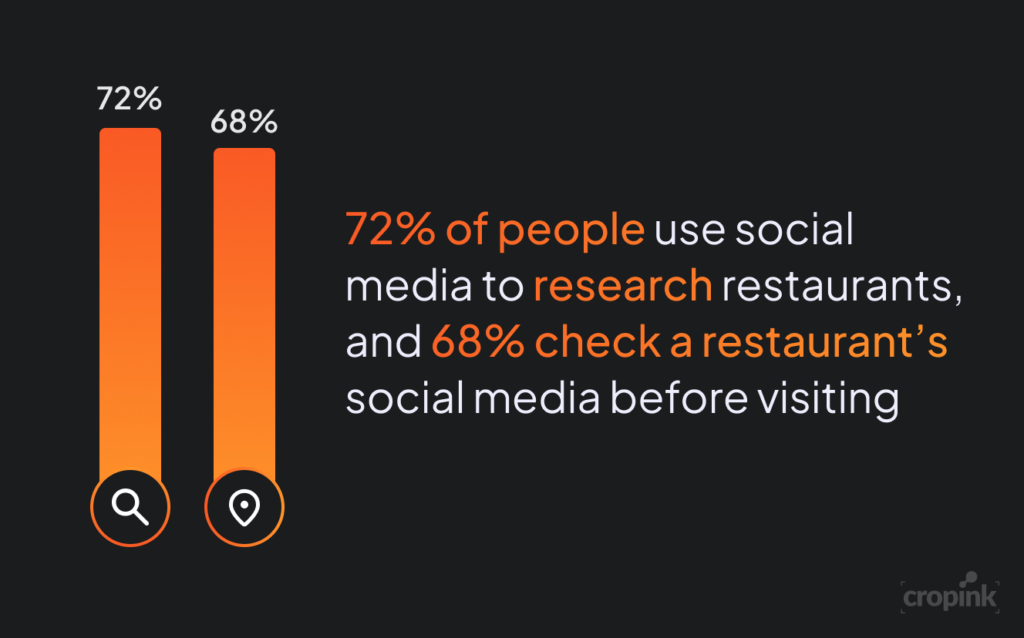
People rarely pick a restaurant these days without consulting Google (or asking Siri/Alexa). In fact, 77% of Gen Z and 67% of millennial diners discover new restaurants on social media, and over half of millennials rely on online review platforms like Google or Yelp.
The era of strolling down the street and walking into a random café is fading; instead, diners search “best [cuisine] near me” or “[meal] near [location]” to plan their next meal.
If your restaurant isn’t showing up in those searches, you’re essentially handing customers over to your competitors. Visibility on search engines and maps is the new lifeblood of restaurant discovery.
Plus, even if they’re right outside your door potential customers will still look up your review ratings and site before they walk in!
Fierce Local Competition
The restaurant industry is notoriously competitive, both offline and online. With over a million restaurants in the US vying for diners’ attention (and tens of thousands in most major cities), standing out requires more than good food.
Nearby eateries and big chains are all optimizing their web presence.
On top of that, aggregator sites and delivery apps often crowd the search results.
Proper SEO is how you fight your way to the top of local SERPs.
By targeting niche keywords (e.g. “gluten-free bakery in Soho”) and optimizing your Google Maps listing, you carve out your own space. Without SEO, a fantastic independent restaurant can easily get buried under a dozen less-impressive places that simply have better online optimization.
For example: Search results for “Mexican restaurant in Boise” reveal not just individual eateries but Yelp’s “10 Best Mexican Restaurants” list and TripAdvisor results. To outrank or at least join those top spots, you need to send Google all the right signals that your restaurant is the most relevant and authoritative option.
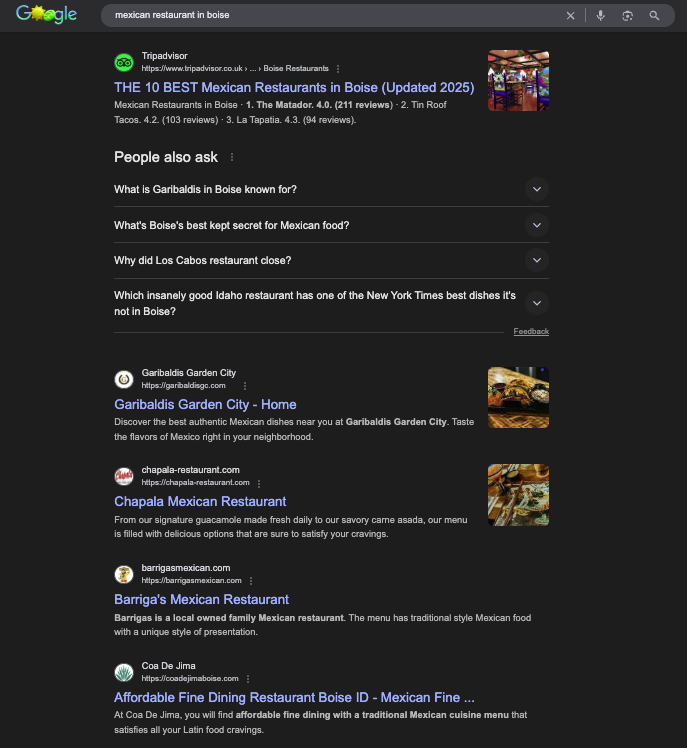
Local Pack = Foot Traffic
For restaurants, getting into the Google “Local 3-Pack” (the map results with three top listings) is like winning a Michelin star for SEO.
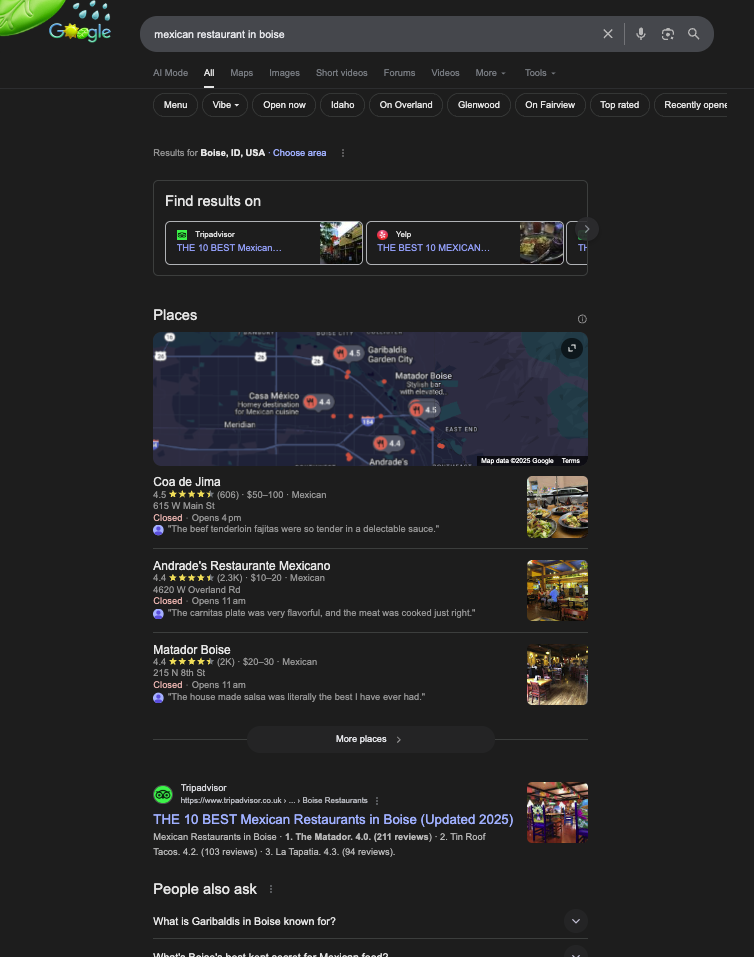
Those map listings appear above regular results and capture tons of clicks and navigations. Showing up there can directly translate into reservations and walk-ins.
Improving your local SEO – through a well-optimized Google Business Profile, lots of positive reviews, and consistent NAP info (Name, Address, Phone) across the web – increases your chances of landing a coveted spot in the local pack.
For example, when someone nearby searches “best dinner near me,” you want your restaurant pinned at the top with a juicy rating visible.
That prominent local presence not only drives clicks but builds immediate trust (seeing that 4.5 rating average encourages the user to choose you over the unrated place down the block).
Builds Trust and Appetite
Ranking high on Google isn’t just about exposure – it’s about credibility.
Users tend to trust the top organic results far more than paid ads. If Google puts you on page 1, consumers infer that your restaurant must be one of the better choices. High rankings often come paired with high review counts and ratings in search snippets, which serve as social proof.
A diner who sees “Popular spot with 250+ reviews” next to your name will be more inclined to click. In fact, businesses that rank in the top 3 usually have hundreds of reviews backing them up on Google Maps.
By investing in SEO, you’re also investing in gathering reviews and improving your online reputation. All of this builds trust before the customer even sets foot inside.
For big dining decisions (anniversary dinner, group brunch, etc.), that trust is key – people want to be sure they’re making the right choice, and appearing at the top of search results with great reviews gives them that confidence.
Long-Term ROI (Your Secret Sauce)
Margins are thin in the restaurant world, and advertising budgets aren’t endless.
While you can pay for visibility via Google Ads or shell out high commissions to delivery apps, those are short-term fixes that eat into profits.
SEO, on the other hand, is a long-term investment that can continue to pay off long after the initial work.
A blog post about “10 Best Vegan Dishes in [Your City]” or an optimized page for “private dining in [Neighborhood]” can keep pulling in organic traffic (and hungry customers) for months or years without additional spend.

(This still ranks #4 after twelve years – this A. shows the on-going value and B. is a prime target for someone to go supplant with a new post!)
Once you’ve climbed to the top of the rankings, you essentially get a stream of diners for free – whereas paid channels stop working the minute you stop paying. Given how many diners prefer to order directly from a restaurant (to avoid fees) if they can find it, good SEO even helps you bypass costly third-party platforms.
A solid SEO strategy can deliver one of the best ROI for your marketing spend – more reservations and orders at a lower cost per acquisition. It’s the gift that keeps on giving, like a pot of stew that only gets more flavorful over time.
Link Building for Restaurants
Just as the foundation of a great soup is a quality stock, the foundation of strong SEO is a healthy backlink profile.
Backlinks (links from other sites to yours) are a key ranking factor – they signal to Google that your restaurant’s site is authoritative and popular.
Of course, not all links are equal. A mention and link from a well-known food blog or local news site is pure gold, whereas a random link from an unrelated directory might be worthless (or harmful).
At fatjoe, our link building experts have been earning high-quality, relevant links for clients in all industries (including restaurants) since 2012.
We know what works to boost your search rankings.
For a restaurant website, ideal backlinks often come from: local food bloggers, city lifestyle magazines, event pages (e.g. a food festival site listing you as a vendor or sponsor), travel and tourism blogs covering your area, and authoritative dining guides.
Imagine your BBQ joint getting mentioned in a “Top 10 BBQ Spots in Texas” article on a big travel blog – that’s SEO gold and likely to send direct referral customers.
How do you get these links? It usually takes outreach and a bit of PR savvy.
Here are a few proven tactics:
Blogger Outreach:
Pitch guest posts or recipe contributions to food bloggers, or invite them for a complimentary tasting in exchange for an honest review.
Our Blogger Outreach service makes this process easy by securing you placements on relevant blogs with in-content links to your site. We handle the outreach and content – you get the backlink.
For instance, we could get your vegan café featured in a vegan lifestyle blog’s article about healthy eating, naturally linking back to your menu page.
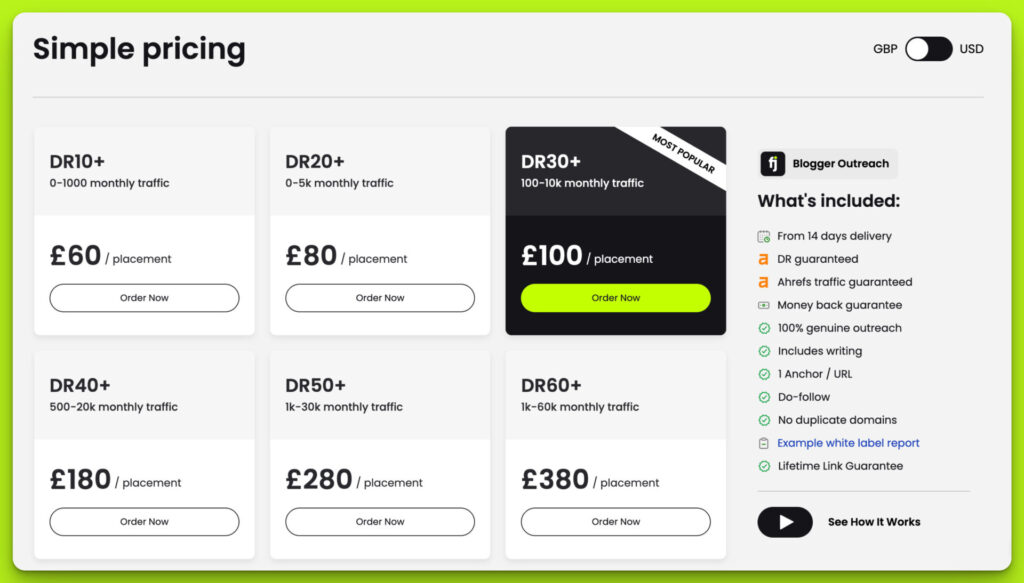
Niche Edits:
These are backlinks added into existing relevant content (rather than new guest posts). fatjoe’s Niche Edits involve finding existing articles about restaurants, food, travel, or local events, and inserting a contextual link to your site.
For example – a travel blog’s 2025 post “Weekend in Birmingham” mentions great restaurants; we could secure an edit to include your restaurant in that list, with a link. It’s a quick way to get placements on established pages that already have authority.
Local Sponsorships & Partnerships:
This is something any restaurant can do. Sponsor a local event, charity, or sports team and you’ll often get a link on their website’s sponsor page.
Partner with nearby hotels or tourism boards – if they list “recommended dining” on their sites, make sure you’re included. These links not only help SEO but also increase local brand visibility.
Digital PR:
Think of this as link building on steroids.
Digital PR campaigns can get your restaurant featured in news outlets and major publications.
For instance, a press release about your cafe hosting a charity drive or winning an award could land on local news sites with juicy backlinks.
fatjoe’s PR Campaigns and Press Release Distribution services help amplify these stories to the right journalists.
Remember, quality beats quantity.
A few strong links from relevant sites will do more for your Google rankings than dozens of low-quality links.
How To Do Restaurant SEO – Other Key Strategies
Now that we’ve whetted your appetite for why SEO matters and how backlinks help, let’s get into the step-by-step strategies for restaurant SEO success.
Below are the main ingredients in a winning recipe for higher rankings:
Keyword Research & Content Strategy
Effective SEO always starts with knowing what your customers are searching for. Keyword research for restaurants means thinking locally and specifically.
Sure, you want to show up for “[cuisine] restaurant [City]”, but don’t stop there. Brainstorm all the queries a potential customer might Google that could lead to you, such as:
- Specific cuisines or dishes (“best Pad Thai in Manchester”)
- Dietary options (“gluten-free bakery London”)
- Occasions and features (“romantic rooftop restaurant NYC”, “kid-friendly café Chicago”)
- Neighborhood-focused terms (“dinner in SoHo”, “downtown LA restaurants”)
- Questions and informational searches (“what is kimchi”, if you run a Korean restaurant – great for blog content)
Use tools like Google’s autocomplete, People Also Ask, or keyword tools to expand this list.
For instance, typing “brunch in [City]” might show suggestions like “brunch in [City] with a view” or “bottomless brunch [City]” – golden opportunities if they match your offering.
If keyword research isn’t your forte or you want exhaustive data, fatjoe’s Keyword Research service can deliver a list of hundreds of relevant keywords (with search volumes and difficulty scores) tailored to your restaurant.
We take the guesswork out by identifying exactly which terms hungry locals are using, from broad phrases to long-tail gems.
Once you have your keywords, it’s time to whip up some content. In the restaurant world, your primary content is your website copy (home page, about, menu descriptions, location pages) and possibly a blog or news section.
Here’s how to optimize content effectively:
Optimize Your Menu and Pages:
Ensure your site prominently features the dishes and cuisines you offer in text form. Don’t just post a PDF of your menu – that’s not SEO-friendly (or user-friendly).
@mccall_girl76 For the love of God, I just want to see the menu!!!🤦🏼♀️🤷🏼♀️ #restaurant #online #website #onlinemenu #letmeseethemmenu #showmethemenu #lookingatthemenu #onlinemenu #idontwanttocreateanaccount #annoying #menu #relatable #fyp #foryou #foryourpage ♬ original sound – Amy Carlin
Instead, have an HTML menu page where each item is listed with a description.
Sprinkle in keywords naturally: if you’re an Italian restaurant, mention that on the home page (“authentic Italian restaurant in Denver”), list dishes like “homemade lasagna” (so you can rank when someone searches that), and include location terms (“located in Denver’s historic Five Points neighborhood”).
This helps search engines understand exactly what you serve and where.
Pro tip: Adding schema markup for menus or recipes can further help Google parse your content, and might even get you rich snippet stars or photos for specific dishes in search results.
Write Delicious Descriptions:
Don’t underestimate the power of a well-written menu description for SEO. Instead of “Chocolate Cake – $6”, use descriptive copy: “Decadent chocolate cake with locally sourced cocoa (a customer favorite in our dessert menu!)”.
The extra detail not only entices customers but also inserts relevant keywords (“chocolate cake”, “dessert menu”) and even location context if you mention local ingredients or origins.
Use a Blog or Articles:
Many restaurants skip blogging, but it can be a secret weapon for SEO.
Consider creating content around what people search for before choosing a restaurant.
You might write: “10 Must-Try Dishes in [Your City] This Winter” (featuring one of your own dishes), “How to Pair Wine with Spice – Tips from Our Sommelier”, or “Behind the Scenes: Sourcing Fresh Seafood in [Your Region]”.
Content like this establishes your expertise and can rank for tangential queries (attracting new visitors).
It also gives other sites something to link to besides your homepage – food bloggers might share your “must-try dishes” article if it’s genuinely useful.
If you don’t have time to craft content, fatjoe’s content team can help with Blog Writing and even full Content Plans to keep a steady flow of SEO-optimized topics coming.
Demonstrate E-E-A-T:
Google’s guidelines around Expertise, Experience, Authoritativeness, and Trustworthiness (E-E-A-T) apply here too.
Show that you’re a legit business run by real people: have an About page with your story, chef bios if relevant, and real photos (of your food, staff, location).
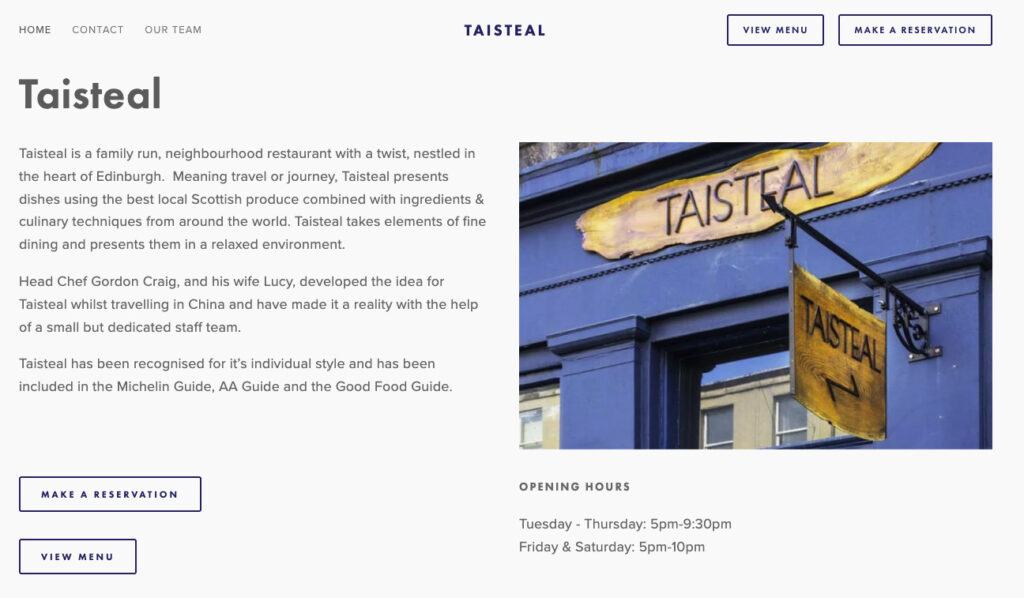
If you have accolades (awards, press mentions, top 10 lists you’ve made), showcase them – it boosts credibility for users and signals quality to Google.
High-quality content that truly answers what users want (e.g., listing vegan options clearly for a vegan searcher) will keep visitors on your site longer, which in turn signals to Google that your site is satisfying user intent.
Mobile-Friendly and Fast:
Many people search for restaurants on their phones, often last-minute.
ake sure your website is mobile-responsive and loads quickly. Google prioritizes mobile page experience. Compress images of your dishes, use a simple design, and make sure text is readable on small screens.
A slow, clunky site can send potential diners to hit the “back” button (straight to a competitor). Plus, Google’s algorithm may overlook you if your site is notably slow.
Local SEO and Citations
For a restaurant, local SEO is truly the main course. When someone in your vicinity searches for restaurants, Google will heavily factor in location and proximity. Here’s how to make sure you’re on the map (literally):
Google Business Profile Optimization:
Claim your Google Business Profile (formerly Google My Business) if you haven’t already. Then fill out every section you possibly can.
This includes accurate Name, Address, Phone (NAP) – which should exactly match what’s on your website – as well as category (choose the best fit, e.g. “Italian Restaurant”), hours of operation, and attributes (does your place have outdoor seating, offer vegan options, etc.).
Add a compelling description of your restaurant (sprinkle a few keywords naturally, like cuisine and neighborhood). Most importantly, upload lots of photos: pictures of your food, interior, exterior, happy customers (with permission).
According to Google, profiles with photos get more clicks and direction requests. An active, fleshed-out Google profile signals to Google that you’re engaged – and it will likely rank you higher in map results.
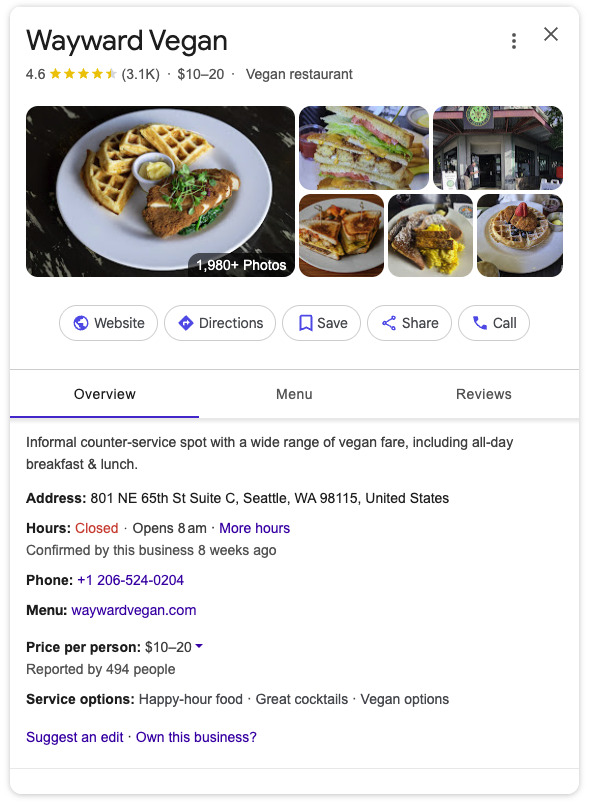
Keep Your GBP Active:
Don’t just set it and forget it.
Post updates regularly – you can publish Google Posts about daily specials, upcoming events, or new menu items.
Answer questions in the Q&A section (seed some common ones if needed, like “Do you have gluten-free options?”). Prompt satisfied customers to leave Google reviews, and be sure to respond to reviews (thank happy diners, address any issues mentioned by unhappy ones professionally).
Google rewards actively managed listings with better visibility – it shows you’re likely to provide up-to-date info to users.
Build Local Citations:
A citation is any online mention of your business name, address, and phone (with or without a link). Having your restaurant listed on popular directories and review sites helps validate your business’s existence and location for search engines.
Start with the big ones: Yelp, TripAdvisor, Facebook, Yellow Pages, OpenTable, Zomato, Foursquare. Then look for local/regional sites or restaurant-specific directories (like Eater, local chamber of commerce sites, tourism websites, etc.).
Ensure your NAP info is 100% consistent across all of them – even a minor difference like “Street” vs “St.” can confuse algorithms.
If managing dozens of listings sounds tedious (it is!), fatjoe’s Local Citation Building service can take that off your plate.
We’ll submit your restaurant to many high-quality directories for you, making sure everything is consistent and optimized.
Leverage Niche Platforms:
Don’t forget industry-specific platforms. For restaurants, that means making sure you’re present (and looking good) on reservation and delivery apps if they apply – e.g., OpenTable, Resy, DoorDash, UberEATS, etc. These may not directly boost your Google SEO, but they rank for terms and often appear in search results.
Plus, Google’s algorithms do sometimes ingest data from partners like these for local info. If a lot of people book you through OpenTable and leave reviews there, it can indirectly buoy your prominence.
Local Schema Markup:
If you’re tech-savvy, implement LocalBusiness schema on your site’s HTML. This code snippet (in JSON-LD format) provides search engines structured info about your business – name, address, geo-coordinates, opening hours, menu URL, etc. It’s not a magic bullet, but it can give you a slight edge in ensuring Google fully understands your biz and can lead to rich results (like those opening hours in SERPs).
By mastering local SEO basics, you increase your odds of dominating the “restaurants near me” searches in your area. The payoff? More people seeing your restaurant at the top of Google Maps and search – which directly translates to more phone calls, route directions, and reservations. In local SEO, details matter (an incorrect phone number or a neglected Google listing can cost you). The good news: every one of these tasks is doable, and the sooner you do them, the sooner you’ll start climbing the rankings.
Encourage Customer Reviews
For restaurants, reviews are make-or-break online.
Great food and service earn you great reviews, which earn you higher visibility, which brings in more customers – it’s a happy cycle.
Google’s local ranking algorithm heavily factors in both the quantity and quality of reviews on your Google Business Profile.
In fact, first-position local results on Google often have 800+ reviews on average, with only slightly fewer for second-place – so you’ll want to build up a solid base of feedback.
That’s just a baseline though – we have over 3k reviews vs 600 reviews here!
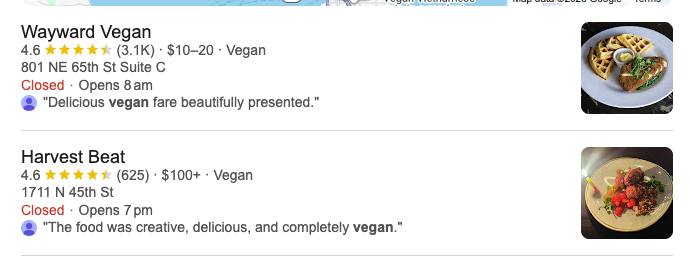
Here’s how to ramp up your reviews (ethically):
Just Ask (Politely):
The simplest tactic is training your staff to gracefully mention reviews when a customer expresses happiness. E.g., when a table gushes “This was amazing!”, your server can reply, “Thank you! It’d mean a lot to us if you share that on Google or Yelp.” Some places hand out a little card with a QR code linking to their Google review page – a gentle nudge.
Make It Easy:
On your website, include a “Review us” link or button that goes directly to your Google review form (you can get a short URL for this from your Google Business dashboard). Also consider email follow-ups: if you take online reservations or have a newsletter, send diners a follow-up thanking them and kindly asking for a review with the direct link provided.
Respond to Reviews:
This is crucial for two reasons.
One, it shows customers you care (which encourages more people to leave feedback since they see you’re listening).
Two, Google has confirmed that owner responses can improve your local ranking over time because it indicates active management.
Respond to every review if possible – thank people for good ones, and tactfully address negative ones by apologizing and promising to improve (never argue!).
A thoughtful management response can even win back a disgruntled customer and shows others reading that you handle issues professionally.
Diversify Review Platforms:
Google reviews are most important for SEO, but don’t ignore Yelp, Facebook, TripAdvisor, etc. Some users trust one platform over another. Having high ratings across the board also improves your overall reputation which can indirectly affect SEO (and definitely affects whether a searcher chooses you).
Note: Yelp discourages directly asking for reviews (their algorithm might filter ones that seem prompted), so focus on delivering awesome service to “earn” Yelp reviews more organically.
Showcase Reviews on Your Site:
Feature some glowing testimonials on your homepage or testimonials page. Not only does this provide fresh content (if you update it periodically), but it also reinforces to site visitors that you’re popular and well-liked. There are widgets to embed Google or Yelp reviews, or you can manually update. While this doesn’t directly boost SEO, it can improve conversion – turning a website visitor into a reservation or order.
Quantity is great, but quality counts too.
A 4.5-star average with 300 reviews will beat a 4.9 with only 5 reviews in Google’s eyes, and certainly in consumers’ eyes (the volume makes it credible).
So aim for both.
Consistency matters as well – a steady flow of new reviews looks better than a flood from 2 years ago and nothing recent. Continually encouraging feedback as part of your process will keep your review profile growing.
One more thing: star ratings can influence click-through rate.
If you show up in the local pack with a strong rating and a competitor has a weaker one, more searchers will click you – which could further boost your ranking (Google notices higher click-through as a positive signal).
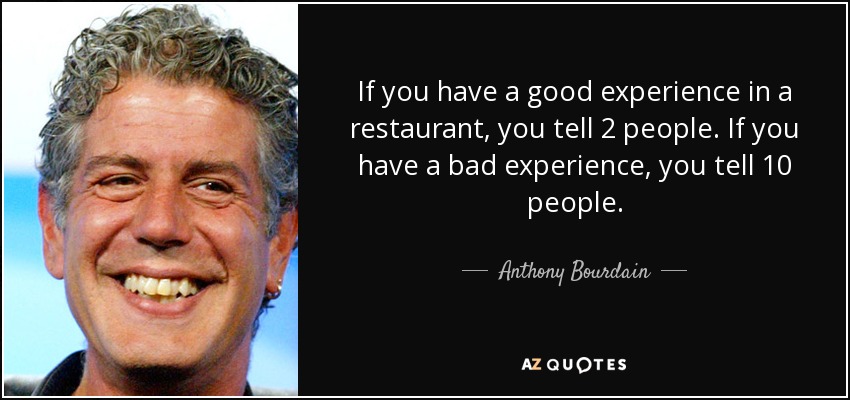
(Okay so this isn’;t an SEO source, but this Bourdain quote does ring true at least)
Struggling with a few bad reviews dragging you down? It happens to the best. Focus on accumulating more positive ones to outweigh them, and address any legitimate issues raised.
If there’s a false review, you can report it.
In extreme cases, businesses embark on “reputation management SEO” to bury negative articles or reviews, but that’s a whole other topic!)
Serving Up Success: A Recipe for Better Rankings
By now, you should have a full plate of strategies to get your restaurant ranking higher and reeling in those hungry searchers.
With the right SEO strategy, your restaurant can move up the rankings and onto the radar of more potential diners.
If you need a helping hand or want to save time, we’re here to help you mix up the perfect SEO recipe for your establishment.
Become a Pro at SEO
Join 65,000 others and learn the secrets to SEO success with our weekly blog posts.
